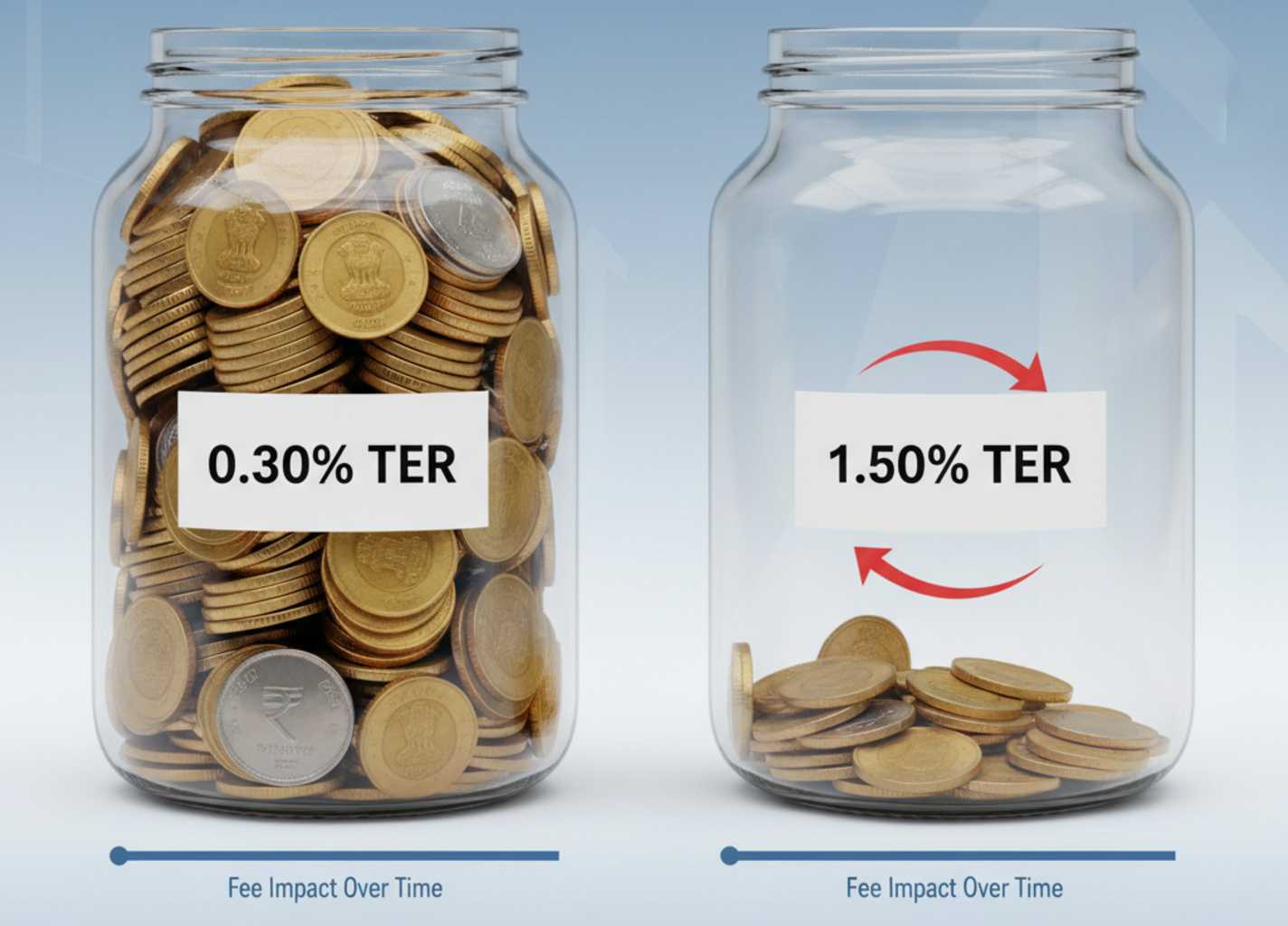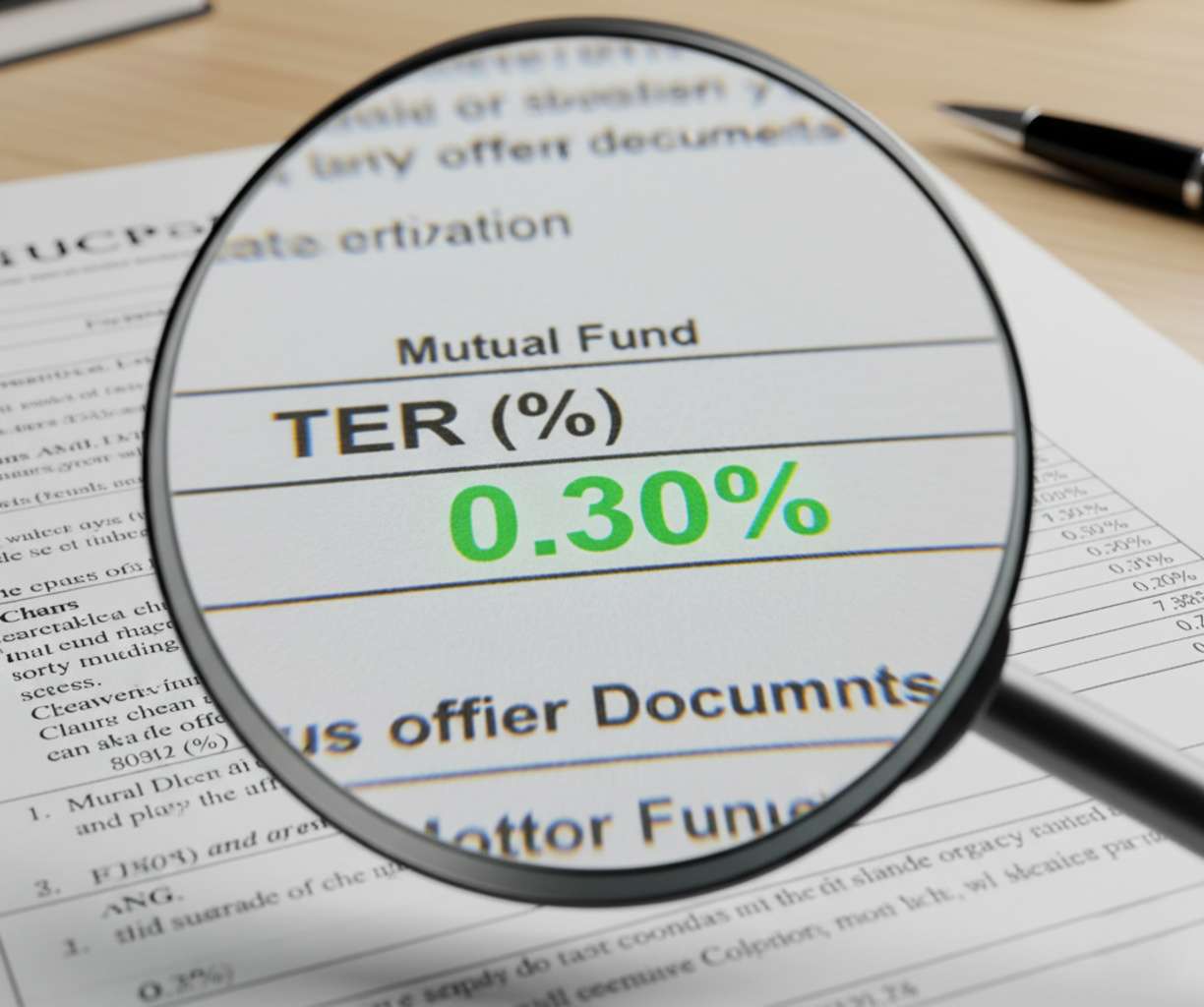As an investor in India, you’ve probably noticed the buzz around low-cost mutual funds, especially with new players entering the market. The big question is: do lower fees automatically lead to better returns? While low expense ratios can certainly save you money, the reality is more nuanced.
In today’s evolving market, the key to smart investing lies in balancing cost with performance. Choosing the cheapest fund might look attractive at first glance, but it’s equally important to consider fund management quality and long-term growth potential. With several thematic funds now offering ultra-low fees, 2025 could be a turning point for Indian investors looking to optimize both returns and costs.
Why Expense Ratios Matter for Mutual Fund Investors in 2025

Have you ever wondered why you’re paying hefty fees for a mutual fund when similar options exist at a fraction of the cost? This is a question many investors are asking today, especially with the rise of low-cost funds like the Jio BlackRock Flexicap Fund.
The expense ratio—also called Total Expense Ratio (TER)—represents the percentage of your investment deducted annually for fund management, operations, and marketing. While this may seem small, even a difference of 0.1% can compound into a significant amount over time.
For instance, a ₹1 lakh investment in a fund with a 0.30% TER costs just ₹300 per year in fees, while a 1.50% TER would take ₹1,500 annually. Over a decade, that’s a gap of ₹12,000—money that could have been growing in your portfolio instead of going to expenses.
With new funds entering the market and SEBI’s push for greater transparency, investors now have access to a wide range of low-cost thematic funds. However, while saving on fees is important, it’s equally crucial to ensure the fund has strong research, skilled management, and a clear investment strategy. The best approach combines low expenses with high-quality decision-making to maximize long-term returns.
Understanding Thematic Funds and Total Expense Ratios (TER)

Thematic investing in India targets specific stories—such as business cycles, quantitative models, or momentum. A thematic fund pools investors into one growth idea. The key number is the Total Expense Ratio: the percentage of your portfolio paid out as fees every year for management, marketing, and administration.
Today, as per actual data (September 17, 2025), many top thematic funds have TERs under 0.51%—a dramatic shift from the era when 1–2% was considered normal. For example, the UTI Quant Fund charges just 0.30%, saving more money for compounding. SEBI’s rules have pushed down TERs, with direct plans often costing 0.2–0.5% less than regular ones.
Even a small difference grows big: if you invest ₹1 lakh, paying 0.30% means ₹300 in fees yearly, while a 1.50% TER takes ₹1,500—a difference of ₹12,000 over 10 years (assuming static investment and simple compounding). My own portfolio benefited greatly when shifting from regular to direct plans; over a decade, those quiet savings made a large impact. Thematic funds with a low expense ratio India are not just for bargain hunters—they’re a tool for smarter wealth building.
Jio BlackRock Flexicap Fund: Is It the Game-Changer of 2025?

Let’s highlight the Jio BlackRock Flexicap Fund—India’s buzzworthy new entrant. Its TER of 0.5% directly challenges older norms and brings the global efficiency of BlackRock to Indian retail investors. For context: most flexicap thematic funds still hover around 1%–1.8%, so this launch represents a sea change.
The fund house claims this low TER will translate into higher long-term returns by keeping more of your money invested. As someone who’s evaluated similar low-fee launches during my years at ICICI Prudential, I do see that lower TERs can make a real difference—especially for investors starting out or looking to avoid hidden costs. The fund offers liquidity (easy entry/exit), flexibly invests across market segments, and lowers cost drag.
But lower fees aren’t the only story. Sometimes, funds slim on costs also slice into research quality, which stings during market downturns. I’ve seen cheaper funds miss warning signs in stock selection, impacting performance for years. So, while the JioBlackRock Flexicap Fund review is promising on cost, it’s smart to balance fee savings with the actual talent and risk management behind the scenes.
Why Low Expense Ratio Mutual Funds Are Gaining Popularity

Why do low TER mutual funds matter so much? In high-growth thematic sectors, every rupee saved is a rupee compounding for your future. Data shows funds with TER under 0.51% (today’s list!) have steadily gained market share. Take the Edelweiss Business Cycle Fund, now at just 0.42% TER—it keeps more of your gains, even during growth surges.
Analysts agree: lower TERs democratize access, allowing small investors to tap into themes like quant momentum without giving up a big chunk to fees. SEBI’s push for cost transparency since 2020 means you can choose wisely.
During periods of high inflation or volatility, these little savings really add up. I saw this clearly during the 2020–2021 bull run, where my lower-cost thematic picks outperformed similar high-fee ones by 2–4% over 18 months, just because less money was deducted in TER.
The Flip Side: Why Generation of Alpha Can Outweigh Low Costs

It’s vital to hear the flipside: some experts argue that higher fees pay for skilled management, which can shield your capital during poor markets. Looking at historical results, funds like SBI Equity Minimum Variance Fund (with a 0.42% TER and proven downside control) demonstrate that good stock selection can, at times, outweigh tiny fee differences.
Morningstar and Value Research reports show that funds paying a bit more for research and management often deliver stronger risk-adjusted returns over time—especially in market downturns. For instance, my experience with the multi-factor funds taught me that while the TER was low (Sundaram at 0.47%), their research-driven resilience made the real difference when volatility hit.
Beware of choosing purely on cost. If a fund skimps on research or portfolio adjustment to save on expenses, the long-term results might suffer. In Indian markets, where themes can be turbulent, the right manager is sometimes worth the fee premium.
Top Thematic Funds With the Lowest TER in India (2025 Data)

Based on today’s snapshot (September 17, 2025), here are India’s leading thematic funds with the lowest TERs, all under 0.51%:
| Fund Name | Theme | TER (%) | AUM (₹ crore) |
|---|---|---|---|
| UTI Quant Fund | Quant/Model-driven | 0.30 | 1,718.16 |
| SBI Equity Minimum Variance Fund | Risk Management | 0.42 | 224.30 |
| Edelweiss Business Cycle Fund | Business Cycle | 0.42 | 1,800.55 |
| Sundaram Business Cycle Fund | Business Cycle | 0.43 | 1,783.74 |
| Sundaram Multi-Factor Fund | Multi-Factor | 0.47 | 861.38 |
| Kotak Pioneer Fund | Thematic | 0.49 | 3,052.61 |
| 360 ONE Quant Fund | Quant | 0.50 | 764.14 |
| Tata Business Cycle Fund | Business Cycle | 0.50 | 2,836.96 |
| Mahindra Manulife Business Cycle Fund | Business Cycle | 0.51 | 1,208.93 |
Data for fund TERs and AUM has been obtained from Tickertape and Moneycontrol
These represent a cross-section of active strategies, quant models, and business cycle bets—all at rock-bottom expense ratios. Remember: these are informational options only. Markets carry risk; research fund docs and consult pros before investing.
Building Wealth With Thematic Funds: Cost, Performance, and Strategy

In 2025, thematic funds with a low expense ratio offer Indian investors real savings that compound for better wealth creation. But cost is just one factor: pairing TER discipline with strong management builds resilient portfolios. Always base decisions on verified numbers—not hype. Use today’s data for smarter choices, and invest for the long term.
Also Check out : –
- Top 5 Large Cap Mutual Funds with Lowest Expense Ratio 2025
- Top 5 Mid Cap Mutual Funds with Lowest Expense Ratio
- Top 5 Small Cap Mutual Funds with Lowest Expense Ratio
Disclaimer: This blog post is for informational purposes only and does not constitute financial advice. The funds mentioned are for education, not recommendations. Mutual fund investments are subject to market risks—please consult a registered financial advisor before investing.

